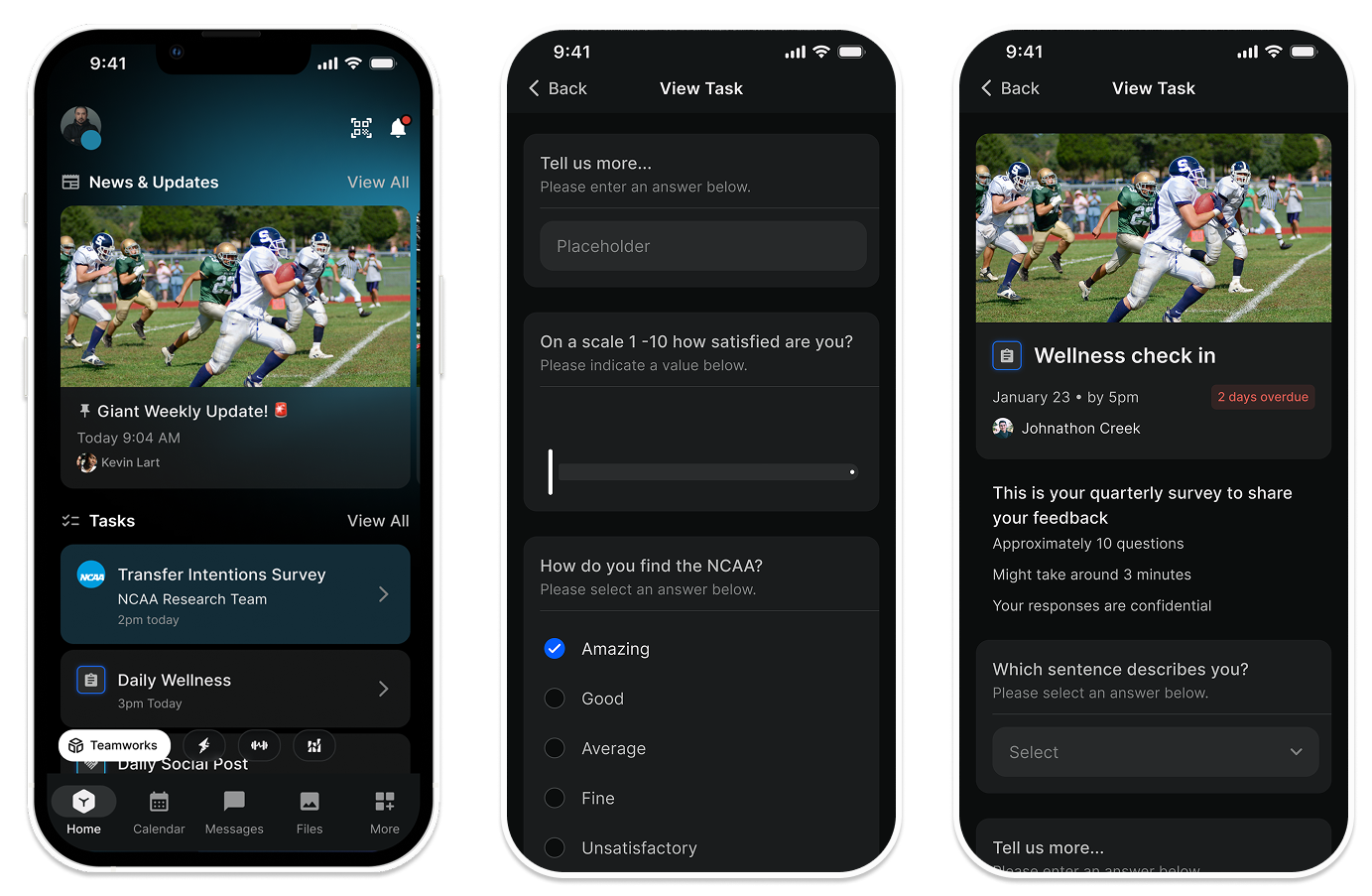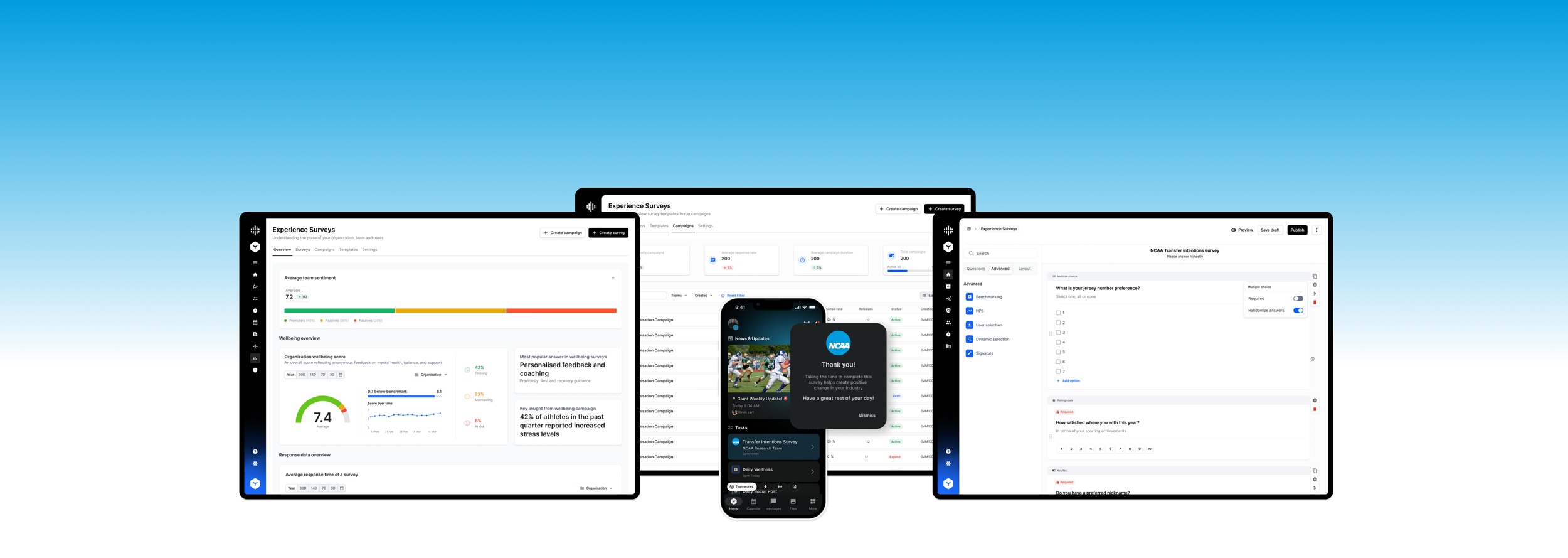
UX/UI Design | Research | User Interviews | Web | Mobile
Experience surveys
Overview
Background
The NCAA partnered with Teamworks to create a dedicated anonymous survey platform that enables the research team to collect student-athlete feedback at scale. Traditional survey cycles took over a year to complete, limiting the NCAA’s ability to act quickly on emerging issues. The challenge was to design a system that gave the NCAA full control over survey design and delivery, while meeting the complex distribution and governance needs of hundreds of member schools.
The solution was a modern survey experience embedded directly within Teamworks and Unity apps, supported by secure web links for non-customers. Real-time analytics and CSV export turned feedback into actionable insights quickly, while Axle/Directory integration and SSO ensured data integrity and privacy. Beyond the immediate pilot, this work also laid the foundation for a reusable multi-organisation framework to scale Pulse across future use cases.
The goals:
Provide the NCAA Research team with a reliable, scalable survey tool designed for student-athletes.
Meet complex distribution requirements: org-by-org opt-in, cohort control, app-based delivery and secure web access.
Ensure trust through privacy, governance, and data integrity standards.
Deliver fast, actionable insights with real-time analytics and exports.
Establish a reusable framework for broader Pulse enhancements and multi-organisation needs.
Insights from users & stakeholders
Discovery calls with NCAA Research leaders along with feedback from pilot schools, highlighted key needs and constraints:
Participation must be school-controlled requiring explicit org-by-org opt-in and buy-in workflows.
Survey content must remain NCAA-owned necessitating advanced authoring tools with conditional logic.
Distribution must meet athletes where they are through mobile apps, reminders, and secure external access.
Privacy and governance are non-negotiable demanding secure login, trusted cohort generation, and aggregated reporting.
Scalability is essential the system must extend beyond a single engagement, supporting Division I mandates and future Pulse features.
Key improvements identified to enhance the user experience included:
Introducing a robust survey builder with multiple question types, rich text, logic, and preview.
Delivering surveys through both in-app channels and secure web links for flexibility.
Ensuring trust through integration, SSO, and anonymised cohort reporting.
Creating a multi-org framework to support parent→child structures, cohorting, and scalable distribution models.
wireframing and exploration
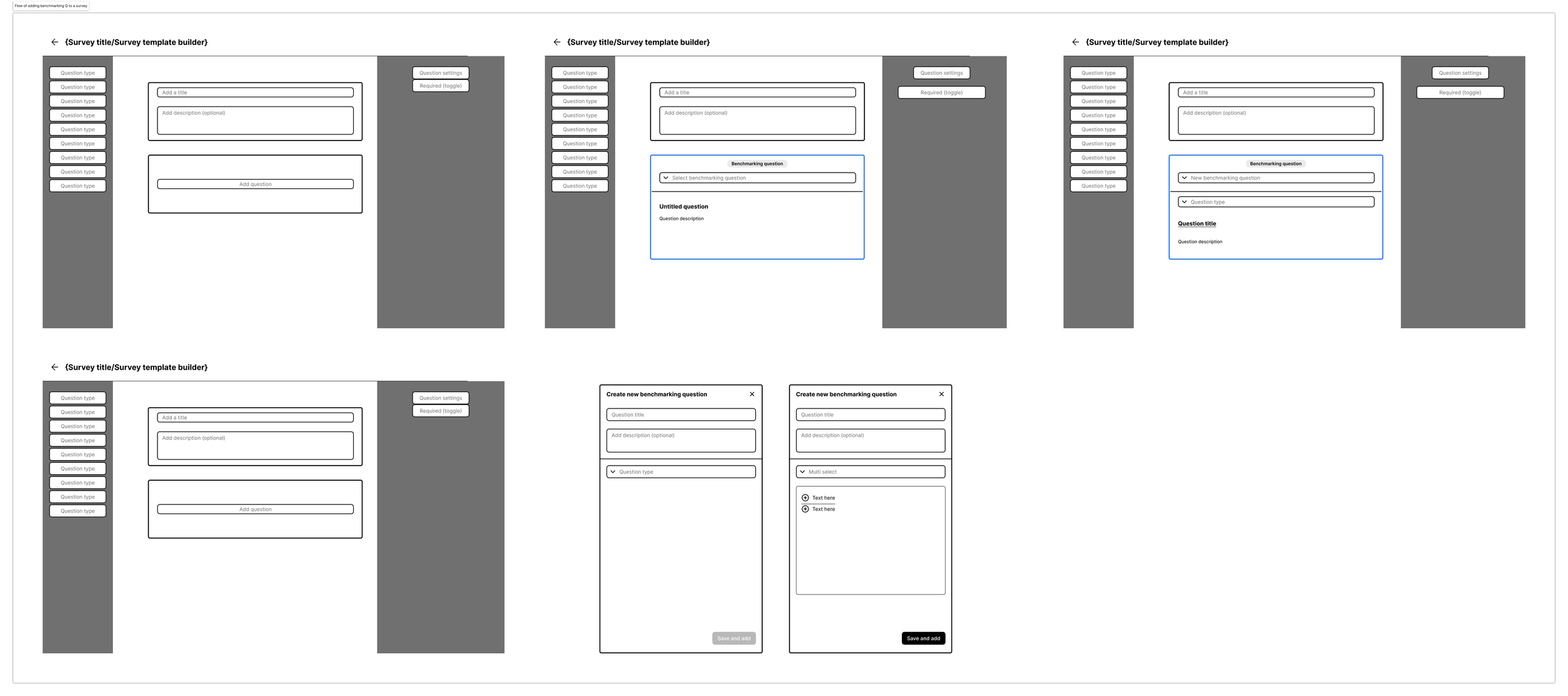

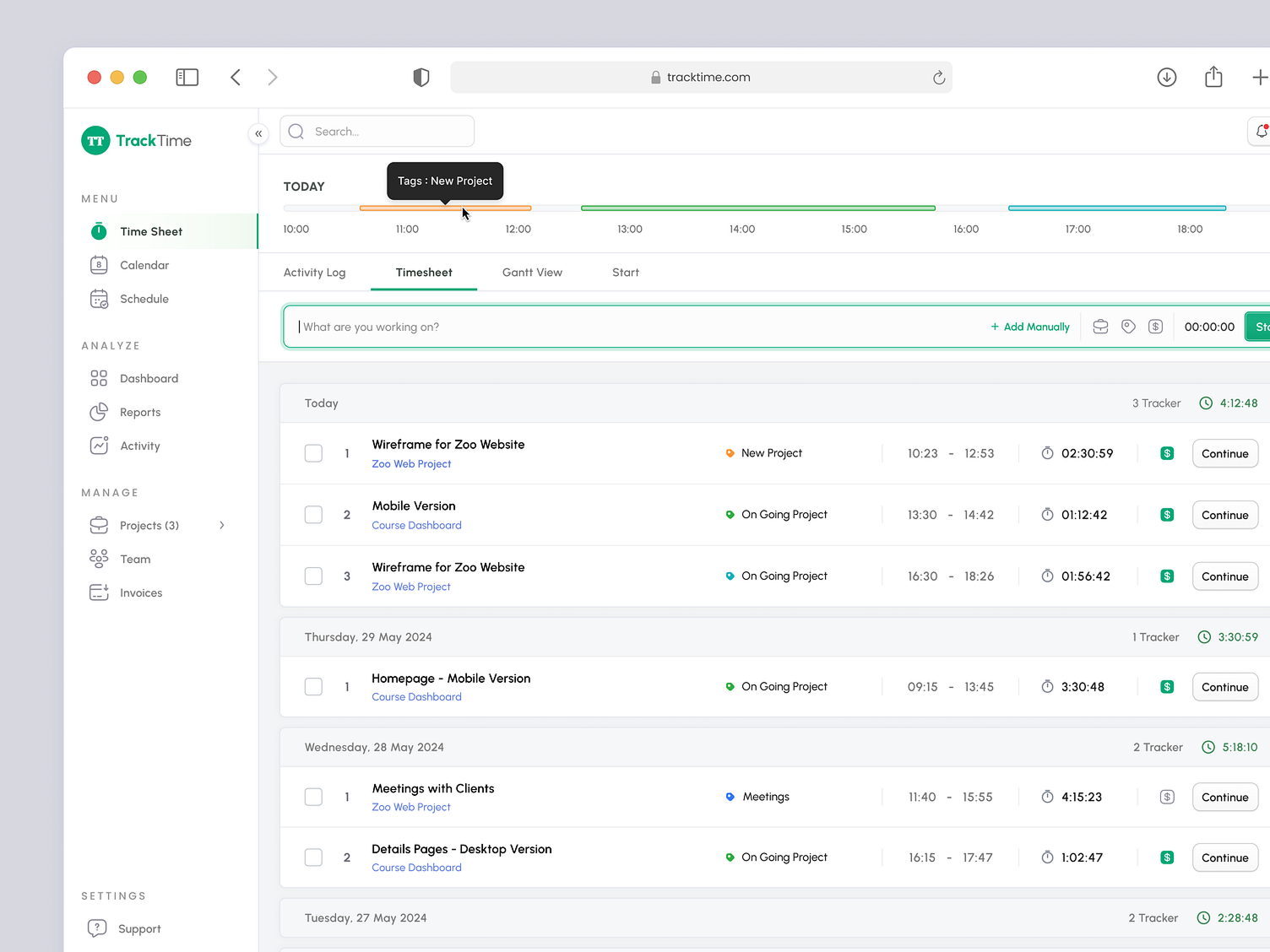
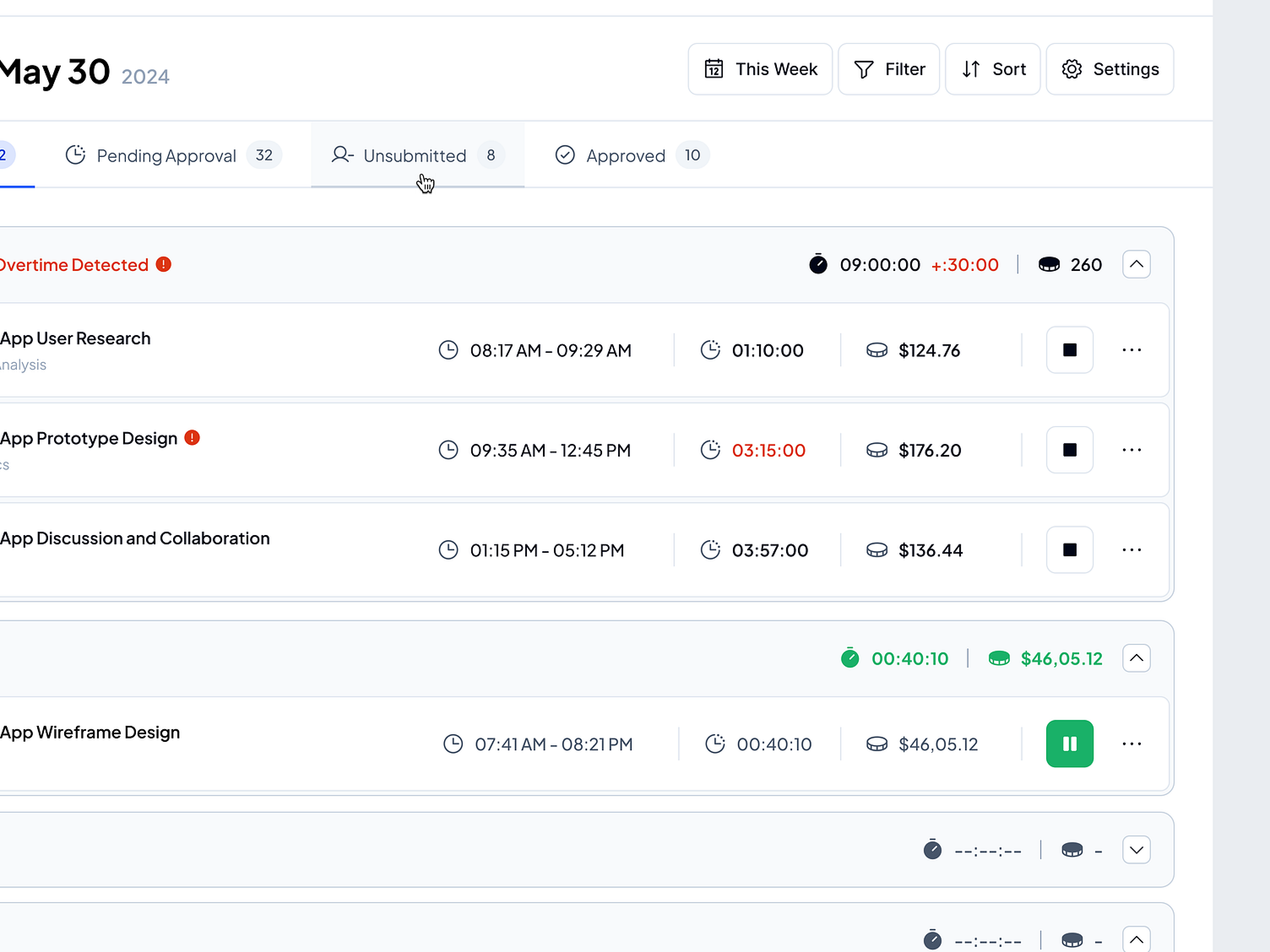
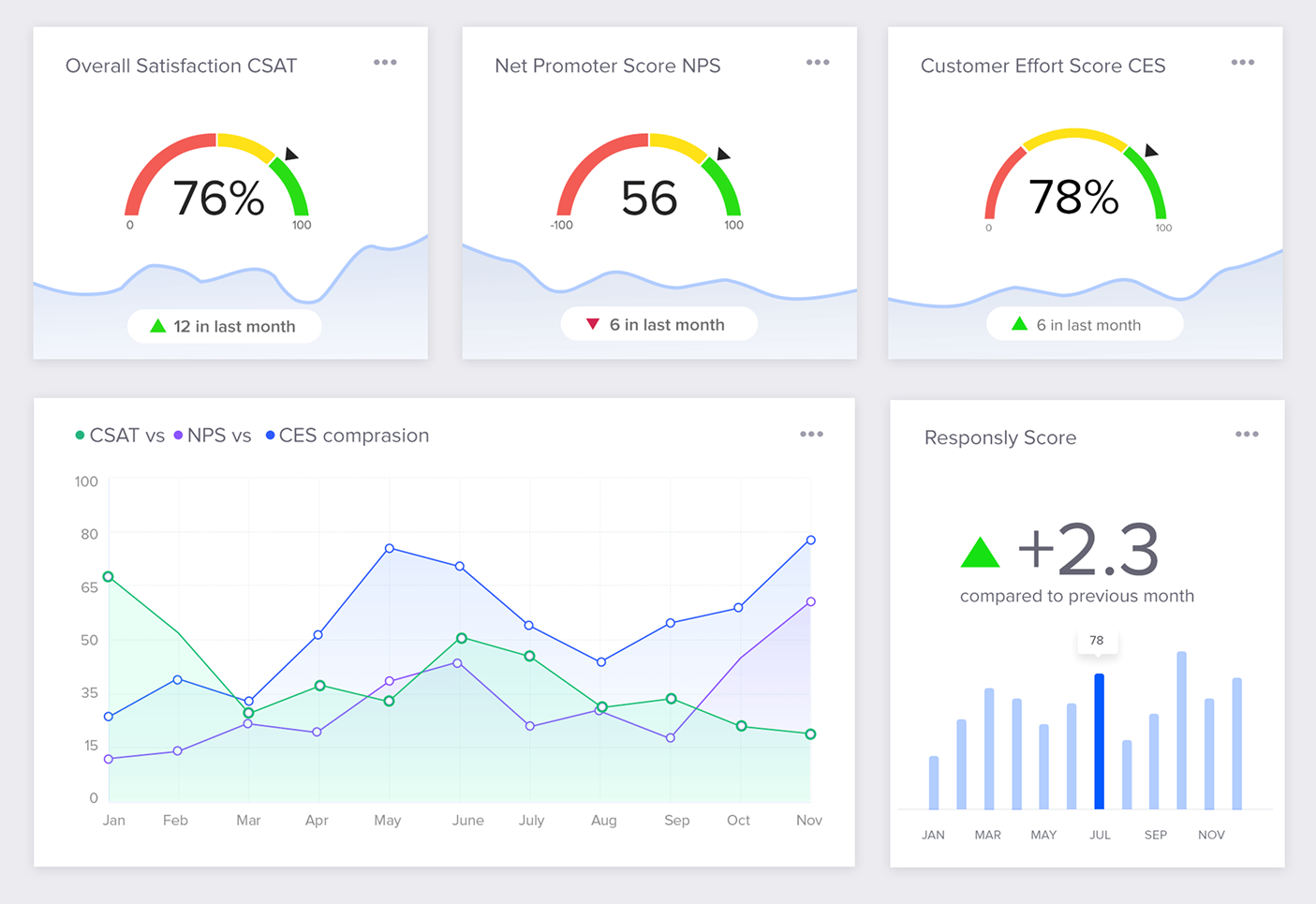
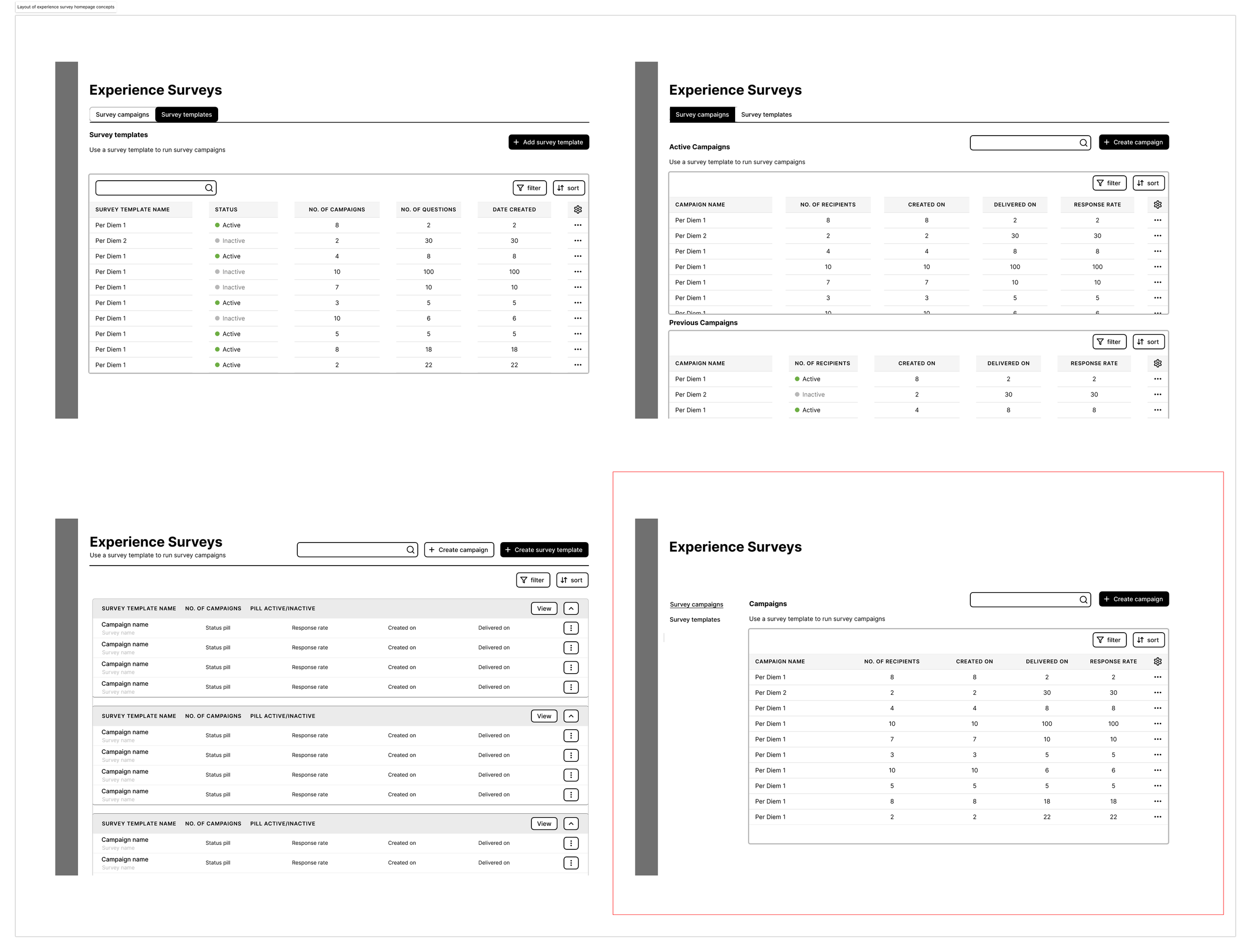
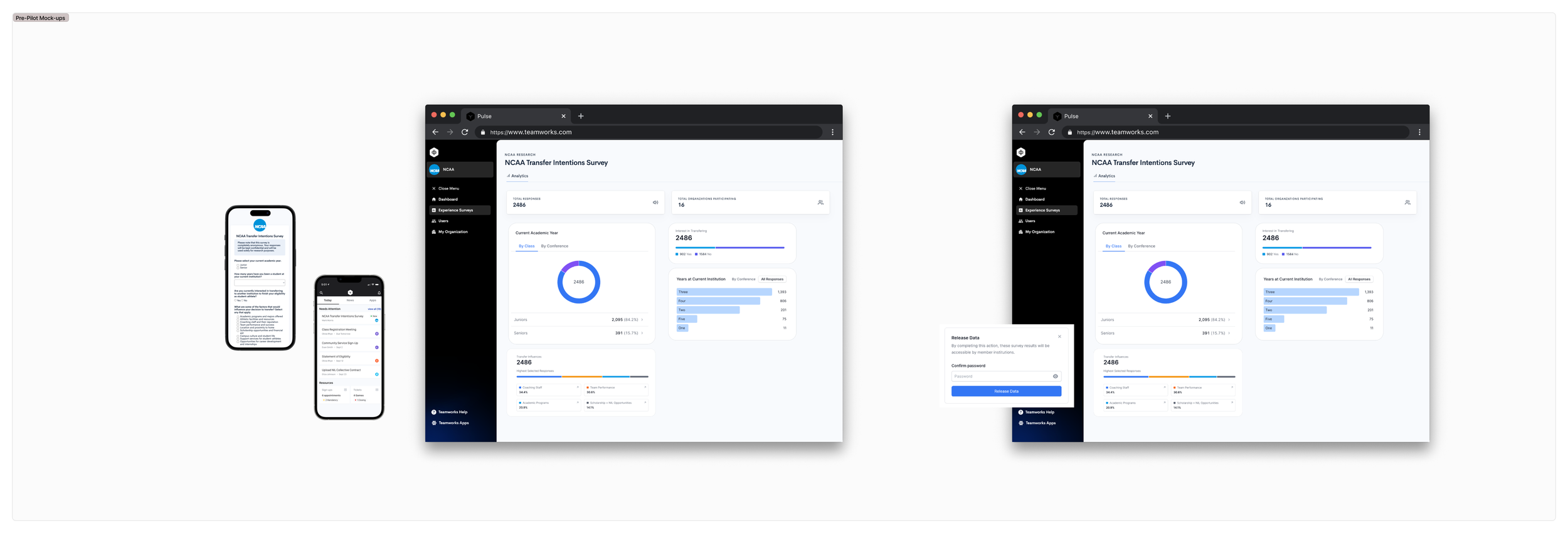
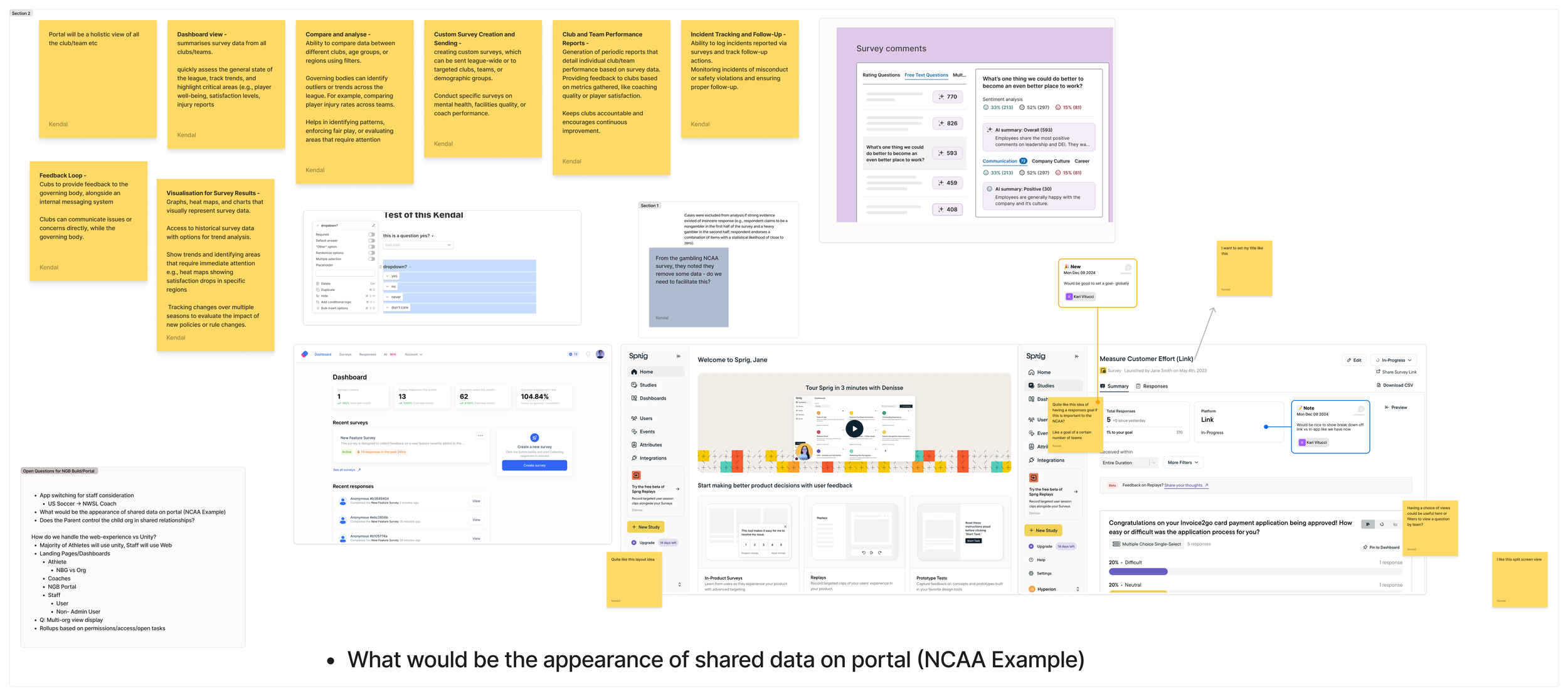
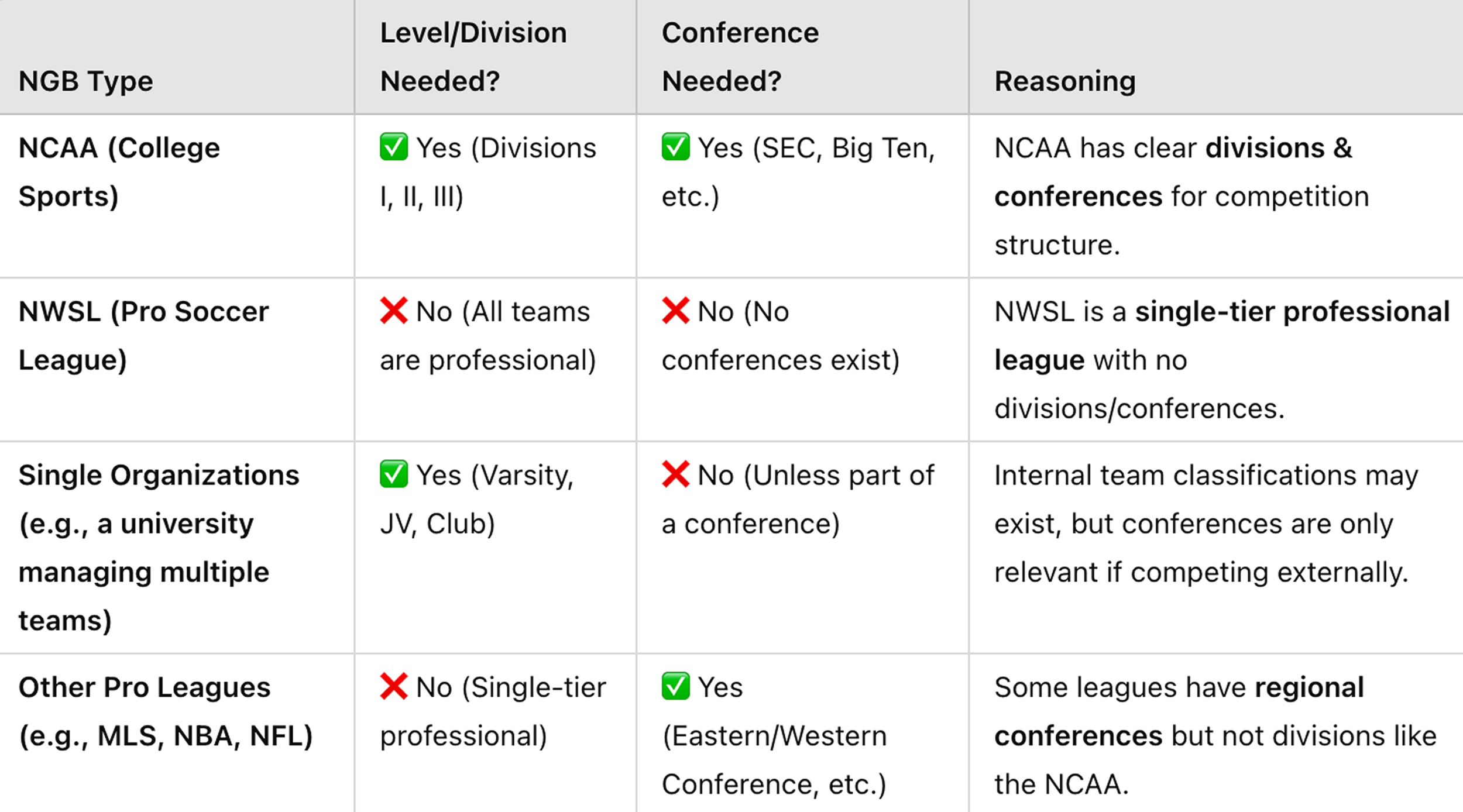
Research & Discovery
The design process began with discovery calls with the NCAA Research team and other similar organisations to understand goals, constraints, and distribution mechanics. A structured pilot programme was then developed to validate the end-to-end flow: org opt-in, survey delivery to student-athletes, response capture, and data return to the NCAA - we ran this through the legacy app. (some of this information is more NDA restricted, but I am happy to share in person)
The project involved redesigning Pulse as a micro front-end within Teamworks’ Hub, aligning with the existing design system and maintaining feature parity with the current product. Dozens of wireframes and flows supported campaign-based surveys, allowing flexible cohorts, stable results even as athletes moved teams, and longitudinal reporting for tracking trends over time.
Designs were validated through conversations with universities and organizations, and internal reviews helped refine scope for a rapid build schedule - December to August. Beyond serving the NCAA, the platform was designed as a scalable, reusable solution for other national governing bodies and single organizations, enabling broader Pulse adoption and multi-org use cases in the future.
Takeaways
Maintaining feature parity and aligning with Teamworks’ design system.
Campaign-based workflows allowed flexible cohorts and repeatable surveys.
Built with longitudinal analytics to track trends and benchmark results.
Feedback from universities and internal reviews informed iterative improvements.
Designed as a scalable solution for NCAA and beyond, supporting multi-org adoption.
Examples of designs based on the feedback
I have selected some of the key features: Viewing the survey, survey analytics, taking a survey, benchmarking the results.
*I can explain in person with more detail on the features if required
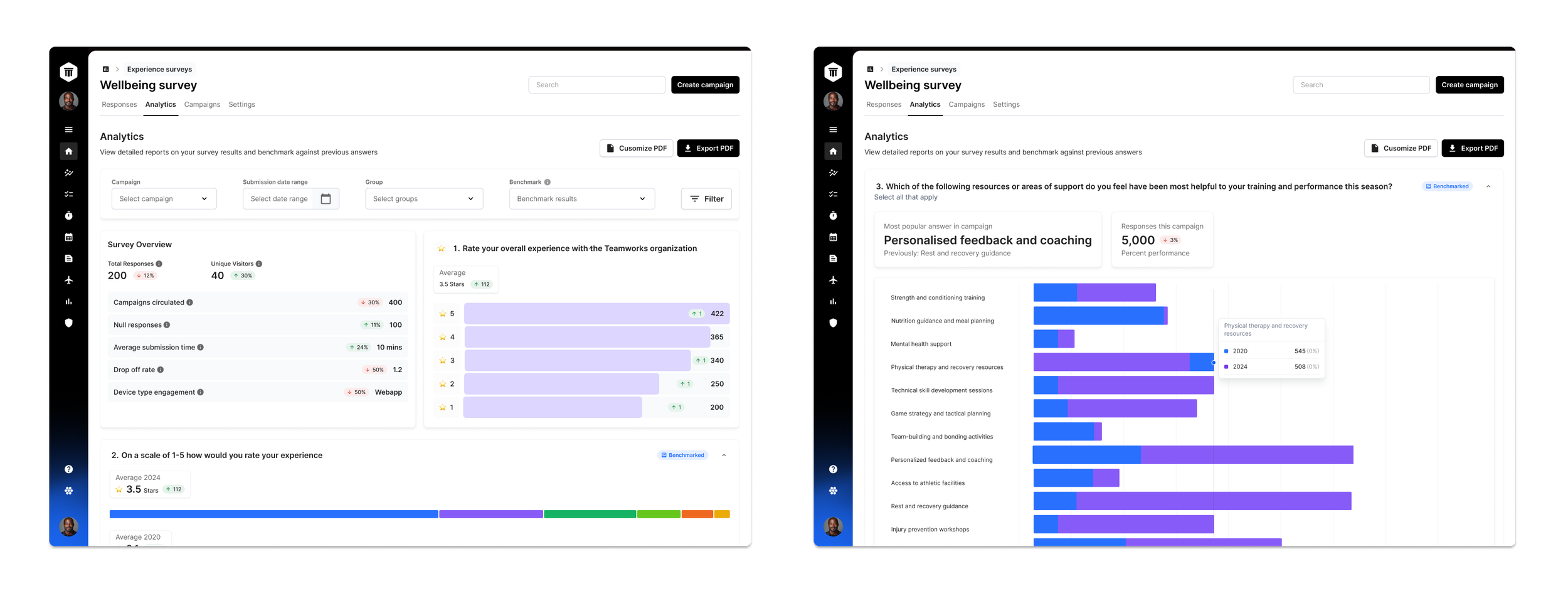

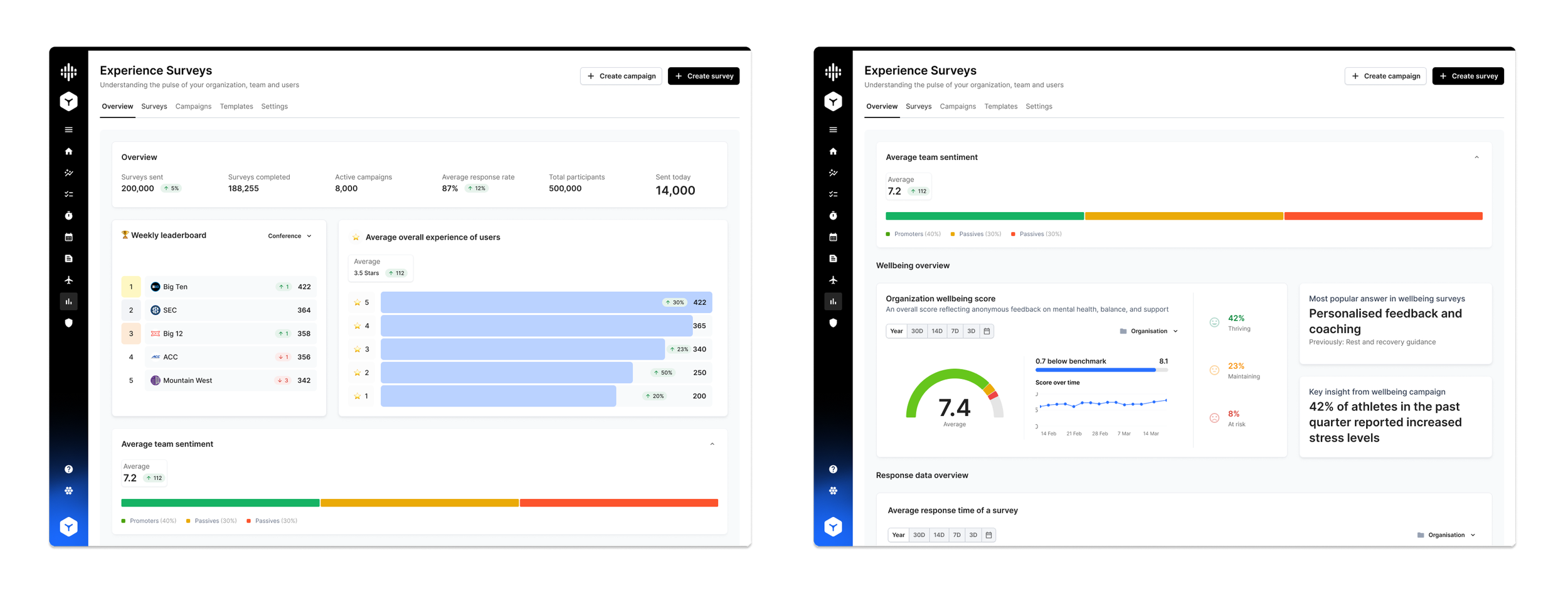
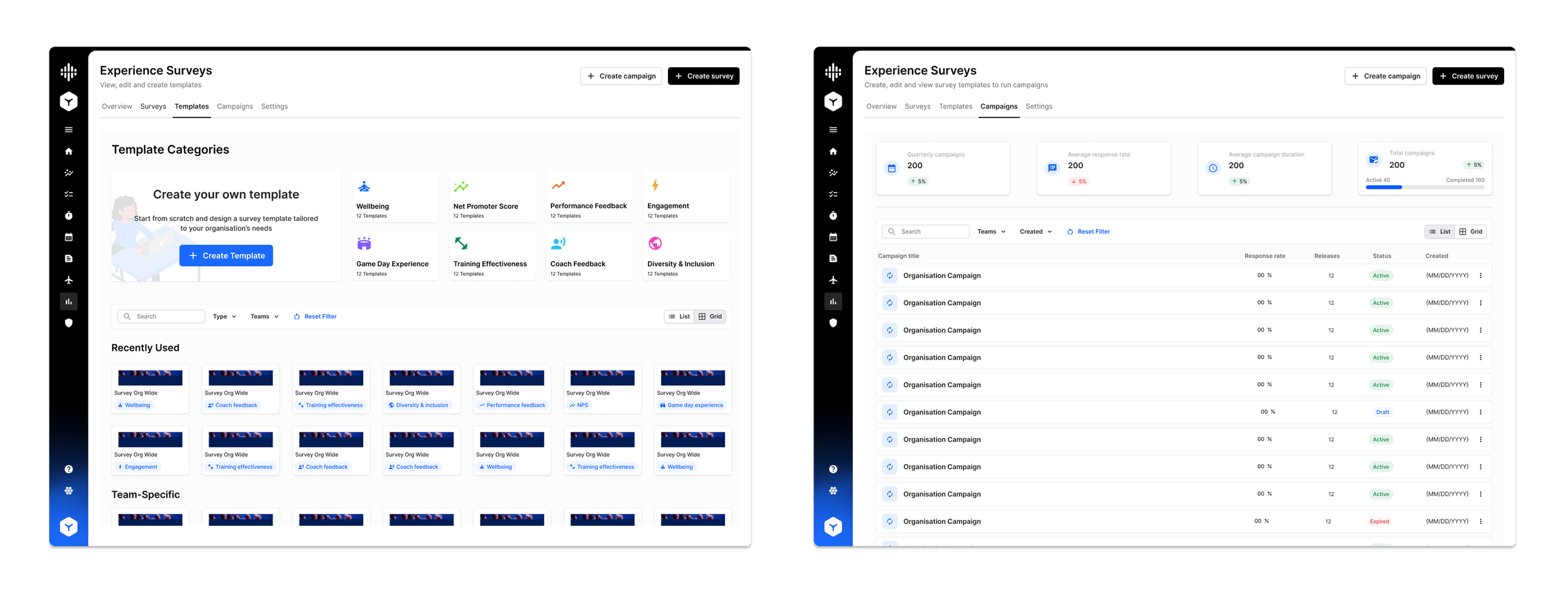

Pilot Study (Oct 2024):
The survey was sent to around 30,000 student-athletes across 64 participating schools.
Response rate: 21% overall
So on average, about 1 in 5 student-athletes participated in the study when distributed through the app with a 5-day response window.
A key focus of the redesign was encouraging student-athletes to engage with the survey. The experience was designed to feel seamless and intuitive, quick to complete, visually engaging, and low effort. While reinforcing that their responses contribute meaningfully to shaping the industry they’re part of..
Insights from the pilot study:
Transfer & well-being concerns require ongoing monitoring
Mental health and dissatisfaction with coaches/teammates were leading transfer drivers, especially among women’s sports. This underscores the need for longitudinal data tracking to spot trends early.
Voluntary, confidential participation works at scale
64 schools (42% of those invited) opted in, and nearly 30,000 athletes were reached in just 5 days. A secure, anonymized system encouraged participation while protecting student identity.
NCAA Partnership launched end of September 25
The NCAA Pulse platform represents a successful partnership with Teamworks to design a modern, scalable survey experience for student-athletes. Translating complex distribution, privacy, and analytics requirements into an intuitive, campaign-based system within the Hub app allowed NCAA Research to collect faster, more reliable feedback and actionable insights. The project also required adaptability, as the product shifted from an independent app to a micro front-end, providing a unique opportunity to explore design within an existing ecosystem. Collaborating closely with the PM and the broader team throughout the process was highly rewarding, helping to align goals, iterate quickly, and deliver a cohesive, user-centered solution. Beyond this launch, the design established a reusable framework, positioning Pulse to serve other governing bodies and organizations while maintaining consistency and usability.
Read more about it here on the NCCA Website
